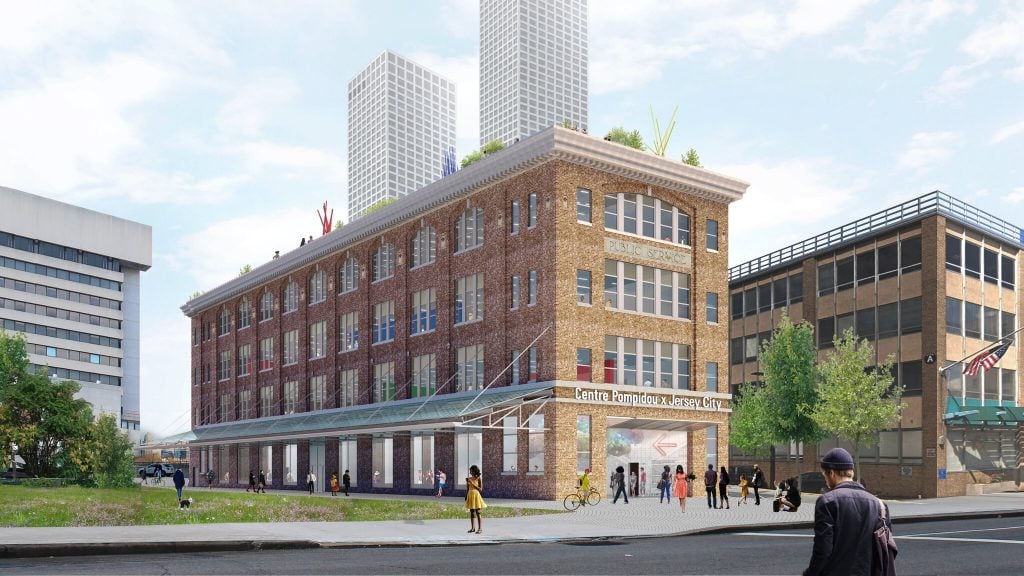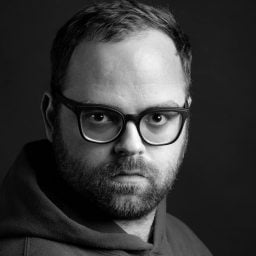Museums & Institutions
Funding for Beleaguered Centre Pompidou x Jersey City Project Hits a Snag
Local politicians are sparring over the museum, which is expected to face a $19 million operating deficit.

New Jersey politicians and government officials are sparring over the funding for Paris’s Centre Pompidou proposed outpost in the Garden State, after the project has been delayed multiple times. Originally slated to launch earlier this year, it’s now expected to open in 2026.
The project was earmarked to receive nearly $58 million in state funding, including $34 million from the New Jersey Economic Development Authority (NJEDA) and $24 million from the Department of State. The Jersey City Redevelopment Agency (JCRA) works with other government agencies, such as the NJEDA, to coordinate and earmark funding and support for redevelopment projects including the future Centre Pompidou x Jersey City.
In March, the JCRA told the NJEDA that it expected an annual revenue of slightly less than $4 million annually with recurring expenses of more than $23 million—for an annual operation shortfall of about $19 million.
The NJEDA wrote a letter to the JCRA in April expressing its continued concerns about releasing funding for the Centre Pompidou x Jersey City project because of that budget shortfall, NJBIZ reported in early May. In an email to Artnet News, a spokesperson for the NJEDA said that there have been no updates since May to share “at this time.”
However, the state authority is reviewing JCRA’s updated revenue model and remains in conversations with them after the local agency in Jersey City, across the Hudson River from Manhattan, responded to NJEDA’s April letter.
In its April letter, the NJEDA had sought the updated budget to address the deficit and “lack of an operating plan” by May 26, warning that it would consider dropping its $34 million in funding. Gov. Phil Murphy has clarified that the funding has not yet been pulled.
“It is evident that strides have been made in identifying funding sources, including substantial state appropriations and potential tax credits under the recently enacted Cultural Arts Incentives Program,” Tim Sullivan, the chief executive of the NJEDA, said in the April letter. “However, it is also apparent that the persistent operating gap continues to pose a substantial challenge.”
But Jersey City Mayor Steve Fulop, a candidate for governor in 2025, claimed in posts on social media that the hardline positions of the state authority came after he endorsed another candidate for a seat in the U.S. Senate over Tammy Murphy, the governor’s wife.
The state contended in emails reviewed by NJBIZ that it has legitimate concerns over the economic viability of the museum project and wants to see sufficient outlines for how the building of the museum will be funded as well as its economic impact on the community.
Murphy expressed during a recent press gaggle that the project would be a “huge badge of honor” for the state, and for North America as a whole. But he said that Sullivan had advised him that there would be the “permanent” budget deficit.
“First of all, it’s a project we have loved, and I continue to love,” Murphy said, adding: “But there’s a point to which our fiscal appetite goes. If it were a modest amount of support on an ongoing operating basis, that’s something to be open-minded to.”
Fulop told NJBIZ at the time that it intended to respond to the additional requests from the NJEDA within a week. He later shared the JCRA’s response, the one still under review by the state authority, on social media.
Diana Jeffrey, the executive director of the JCRA, wrote in the local agency’s response that it was “caught off guard” by Sullivan’s letter in April but said it would treat the letter as an “honest willingness” by the state to continue its collaboration in funding the project. Jeffrey noted that the costs of construction are “in line” with comparable museums and that expected operating costs are also comparable to other institutions.
Jeffrey noted the complexities of getting a project like Centre Pompidou x Jersey City off the ground because it involves collaboration with foreign governments and multiple stakeholders, but praised the efforts of the NJEDA in its commitment to the project.
“For example, the original plan put forth by the state, and evidenced in our first state budget appropriation, dedicated such initial $24 million of state grant funding from the Council on the Arts to offset operational costs,” Jeffrey wrote. “At the time of the first state budget appropriation, the proposed annual operating budget for the [Centre Pompidou x Jersey City] after earned income was approximately $22.5 million. We worked diligently to decrease that amount, so that today that amount is now $19 million, and likely lower.”
Still, Sullivan has said that “time is not on our side” for the project because the funding “has a federal clock attached to it.”
Earlier this month, the Jersey Journal obtained two detailed draft economic impact reports about the museum through records requests that show the Centre Pompidou satellite could become what it called “an expensive burden for nearby property owners, yielding higher taxes without much direct benefit.”
The reports anticipate a range of annual attendance to be between 100,000 to 250,000 visitors annually, mostly out-of-towners who are estimated to generate between $5.5 million to $14.1 million in spending, spread among categories including dining, shopping, lodging, and transportation.
Meanwhile, property taxes are expected to rise to add $11.8 million annually for local taxing districts—a sum of some $220 million over three decades.





